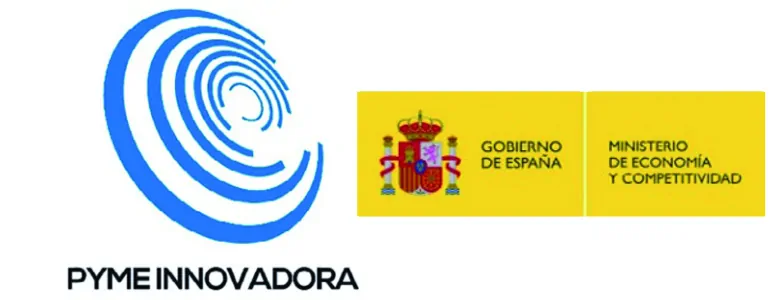
HORIZON EUROPE

 Europeo
Europeo
Specific Challenge:Photonics is driving innovation in many different application areas. The challenge is to help European companies become more competitive by improving their business/production processes as well as products and services by means of photonics technology. The aim is to accelerate the design, development and uptake of photonics technology, by a wide range of industrial players, in particular SMEs by providing low-barrier access to volume production of advanced photonics components available to a wide range of industrial players, in particular SMEs which would otherwise not have easy access. Photonics Manufacturing Pilot Lines should form the basis for future Photonics Digital Innovation Hubs.
Scope:The focus is on Manufacturing Pilot Lines: actions should provide open access to manufacturing of advanced photonics components and systems and offer related services including design and characterization. They should cover all stages of manufacturing through to testing, provide a low entry barrier access to low and medium production volumes and the processes used should be scalable to high production volumes. Actions should include a validation of the...
ver más
Specific Challenge:Photonics is driving innovation in many different application areas. The challenge is to help European companies become more competitive by improving their business/production processes as well as products and services by means of photonics technology. The aim is to accelerate the design, development and uptake of photonics technology, by a wide range of industrial players, in particular SMEs by providing low-barrier access to volume production of advanced photonics components available to a wide range of industrial players, in particular SMEs which would otherwise not have easy access. Photonics Manufacturing Pilot Lines should form the basis for future Photonics Digital Innovation Hubs.
Scope:The focus is on Manufacturing Pilot Lines: actions should provide open access to manufacturing of advanced photonics components and systems and offer related services including design and characterization. They should cover all stages of manufacturing through to testing, provide a low entry barrier access to low and medium production volumes and the processes used should be scalable to high production volumes. Actions should include a validation of the pilot line offer with involvement of externals users in pre-commercial production runs. Activities should aim at long-term sustainability, including development of or integration into photonics innovation hubs.
Actions should make use of existing infrastructure and develop close links with on-going European and national initiatives in order to maximise impact. Proposals must present industrially relevant business cases for the manufacturing pilot line, a plan for long-term sustainability and a credible strategy for future high volume production in Europe at competitive cost.
Actions must address one or more of the following technologies.
Indium Phosphide (2018 call): providing open access to photonics integrated circuits based on Indium Phosphide, going beyond multi-project wafers and offering generic solutions for a wide class of applications. Silicon Photonics (2018 call): providing open access to photonics integrated circuits based on Silicon Photonics, going beyond multi-project wafers and offering generic solutions for a wide class of applications. Next generation free-form optics (2019 call): maturing a technology platform and providing access to optics with free-form shapes and exceptional surface finish, exploiting new optical materials and/or combining and integrating diffractive/refractive/reflective optical components, to obtain improved performances and capabilities. Advanced optical medical device technologies for medical diagnostics (2019 call): maturing a technology platform and providing access to novel, reliable, robust optical based devices for in-vivo and/or in-vitro medical diagnosis. At least one proposal will be selected to cover each of these technologies. The Commission considers that proposals requesting a contribution from the EU between EUR 8 and 15 million would allow these to be addressed appropriately. Nevertheless this does not preclude submission and selection of proposals requesting other amounts.
Expected Impact:Proposals should describe how the proposed work will contribute to the listed corresponding expected impacts and include baseline, targets and metrics to measure impact.
Improve significantly the uptake of photonics technology by end-user industry, in particular SMEs, enabling a demonstrably more competitive European industry. Greatly accelerate the time to market. Create sustainable manufacturing capability in Europe.
Cross-cutting Priorities:Contractual Public-Private Partnerships (cPPPs)Photonics
ver menos
Características del consorcio
 :
La ayuda es de ámbito europeo, puede aplicar a esta linea cualquier empresa que forme parte de la Comunidad Europea.
:
La ayuda es de ámbito europeo, puede aplicar a esta linea cualquier empresa que forme parte de la Comunidad Europea.
Características del Proyecto
Los costes de personal subvencionables cubren las horas de trabajo efectivo de las personas directamente dedicadas a la ejecución de la acción. Los propietarios de pequeñas y medianas empresas que no perciban salario y otras personas físicas que no perciban salario podrán imputar los costes de personal sobre la base de una escala de costes unitarios
Los otros costes directos se dividen en los siguientes apartados: Viajes, amortizaciones, equipamiento y otros bienes y servicios. Se financia la amortización de equipos, permitiendo incluir la amortización de equipos adquiridos antes del proyecto si se registra durante su ejecución. En el apartado de otros bienes y servicios se incluyen los diferentes bienes y servicios comprados por los beneficiarios a proveedores externos para poder llevar a cabo sus tareas
La subcontratación en ayudas europeas no debe tratarse del core de actividades de I+D del proyecto. El contratista debe ser seleccionado por el beneficiario de acuerdo con el principio de mejor relación calidad-precio bajo las condiciones de transparencia e igualdad (en ningún caso consistirá en solicitar menos de 3 ofertas). En el caso de entidades públicas, para la subcontratación se deberán de seguir las leyes que rijan en el país al que pertenezca el contratante
Características de la financiación
1. Eligible countries: described in Annex A of the Work Programme.
A number of non-EU/non-Associated Countries that are not automatically eligible for funding have made specific provisions for making funding available for their participants in Horizon 2020 projects. See the information in the Online Manual.
2. Eligibility and admissibility conditions: described in Annex B and Annex C of the Work Programme.
Proposal page limits and layout: please refer to Part B of the proposal template in the submission system below.
3. Evaluation:
Evaluation criteria, scoring and thresholds are described in Annex H of the Work Programme.
Submission and evaluation processes are described in the Online Manual.
4. Indicative time for evaluation and grant agreements:
Information on the outcome of evaluation (single-stage call): maximum 5 months from the deadline for submission.
Signature of grant agreements: maximum 8 months from the deadline for submission.
5. Proposal templates, evaluation forms and model grant agreements (MGA):
Innovation Action:
Specific provisions and funding rates
Standard proposal template
Standard evaluation form
General MGA - Multi-Ben... A small piece of text, which is also relevant for this topic, can be found in the 'Call Summary' under the subheading 'Technologies for Digitising European Industry'.
1. Eligible countries: described in Annex A of the Work Programme.
A number of non-EU/non-Associated Countries that are not automatically eligible for funding have made specific provisions for making funding available for their participants in Horizon 2020 projects. See the information in the Online Manual.
2. Eligibility and admissibility conditions: described in Annex B and Annex C of the Work Programme.
Proposal page limits and layout: please refer to Part B of the proposal template in the submission system below.
3. Evaluation:
Evaluation criteria, scoring and thresholds are described in Annex H of the Work Programme.
Submission and evaluation processes are described in the Online Manual.
4. Indicative time for evaluation and grant agreements:
Information on the outcome of evaluation (single-stage call): maximum 5 months from the deadline for submission.
Signature of grant agreements: maximum 8 months from the deadline for submission.
5. Proposal templates, evaluation forms and model grant agreements (MGA):
Innovation Action:
Specific provisions and funding rates
Standard proposal template
Standard evaluation form
General MGA - Multi-Beneficiary
Annotated Grant Agreement
6. Additional provisions:
Horizon 2020 budget flexibility
Classified information
Members of consortium are required to conclude a consortium agreement, in principle prior to the signature of the grant agreement.
8. Additional documents:
1. Introduction WP 2018-20
5. Introduction to Leadership in enabling and industrial technologies (LEITs) WP 2018-20
5i. Information and communication technologies (ICT) WP 2018-20
18. Dissemination, Exploitation and Evaluation WP 2018-20
General annexes to the Work Programme 2018-2020
Legal basis: Horizon 2020 Regulation of Establishment
Legal basis: Horizon 2020 Rules for Participation
Legal basis: Horizon 2020 Specific Programme
7. Open access must be granted to all scientific publications resulting from Horizon 2020 actions.
Where relevant, proposals should also provide information on how the participants will manage the research data generated and/or collected during the project, such as details on what types of data the project will generate, whether and how this data will be exploited or made accessible for verification and re-use, and how it will be curated and preserved.
Open access to research data
The Open Research Data Pilot has been extended to cover all Horizon 2020 topics for which the submission is opened on 26 July 2016 or later. Projects funded under this topic will therefore by default provide open access to the research data they generate, except if they decide to opt-out under the conditions described in Annex L of the Work Programme. Projects can opt-out at any stage, that is both before and after the grant signature.
Note that the evaluation phase proposals will not be evaluated more favourably because they plan to open or share their data, and will not be penalised for opting out.
Open research data sharing applies to the data needed to validate the results presented in scientific publications. Additionally, projects can choose to make other data available open access and need to describe their approach in a Data Management Plan.
Projects need to create a Data Management Plan (DMP), except if they opt-out of making their research data open access. A first version of the DMP must be provided as an early deliverable within six months of the project and should be updated during the project as appropriate. The Commission already provides guidance documents, including a template for DMPs. See the Online Manual.
Eligibility of costs: costs related to data management and data sharing are eligible for reimbursement during the project duration.
The legal requirements for projects participating in this pilot are in the article 29.3 of the Model Grant Agreement.
Información adicional de la convocatoria
Otras ventajas
Ayudas Similares

| Abierta

| Próximamente

| Abierta

